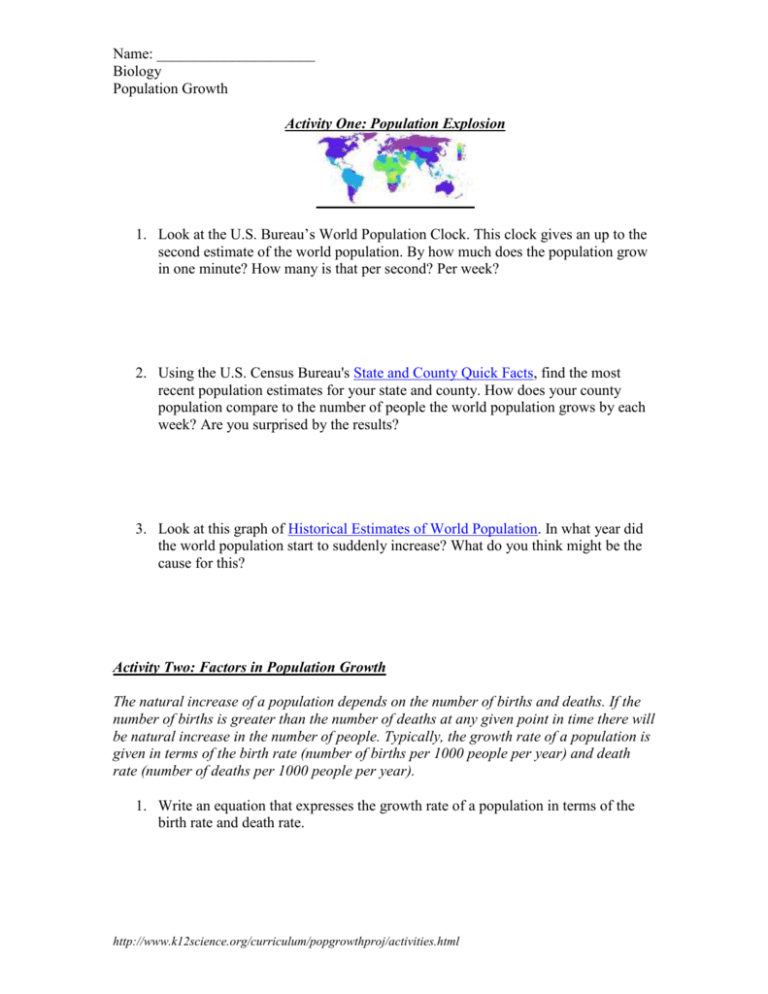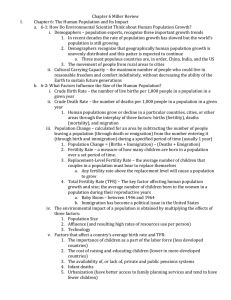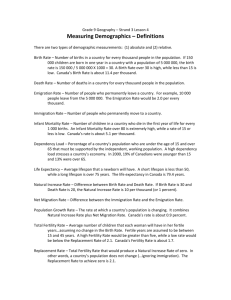Activity One: Population Explosion
advertisement

Name: _____________________ Biology Population Growth Activity One: Population Explosion 1. Look at the U.S. Bureau’s World Population Clock. This clock gives an up to the second estimate of the world population. By how much does the population grow in one minute? How many is that per second? Per week? 2. Using the U.S. Census Bureau's State and County Quick Facts, find the most recent population estimates for your state and county. How does your county population compare to the number of people the world population grows by each week? Are you surprised by the results? 3. Look at this graph of Historical Estimates of World Population. In what year did the world population start to suddenly increase? What do you think might be the cause for this? Activity Two: Factors in Population Growth The natural increase of a population depends on the number of births and deaths. If the number of births is greater than the number of deaths at any given point in time there will be natural increase in the number of people. Typically, the growth rate of a population is given in terms of the birth rate (number of births per 1000 people per year) and death rate (number of deaths per 1000 people per year). 1. Write an equation that expresses the growth rate of a population in terms of the birth rate and death rate. http://www.k12science.org/curriculum/popgrowthproj/activities.html Name: _____________________ Biology Population Growth 2. What circumstances might result in a high birth rate for a population? A low birth rate? 3. What circumstances might result a high death rate for a population? A low death rate? 4. Look at the charts of Birth and Death Rates. If both birth rates and death rates are declining worldwide, why is the world's population still increasing? Based on this birth rate and death rate information, what could you say about the world's growth rate in recent years? 5. There are many factors that contribute to birth rates and death rates. Fertility rates and life expectancy are just two examples. Fertility rate is the average number of children born to women in a given population. Look at the summary demographic data for the U.S. in the IDB Summary Demographic Data database. In 2010, what was the estimated total fertility rate and life expectancy in the U.S.? 6. Look at historical information for U.S. birth rates and fertility rates between 1920 and 1999. How might fertility rate affect the birth rate? How might it ultimately affect the population growth rate? 7. Look at historical information for U.S. life expectancy at birth between 1900 and 2000 (all races, both sexes). How might life expectancy affect the death rate? How might it ultimately affect the population growth rate? 8. For countries, states, and regions, the population growth rate is also affected by the rate at which people migrate across regional boundaries. Net migration is the difference between immigration (movement into a region) and emigration (movement out of region.) Write an equation that expresses the growth rate of a http://www.k12science.org/curriculum/popgrowthproj/activities.html Name: _____________________ Biology Population Growth population in terms of the birth rate, death rate, immigration rate and emigration rate. 9. Can you think of any other factors that might affect the growth rate of a country? http://www.k12science.org/curriculum/popgrowthproj/activities.html











